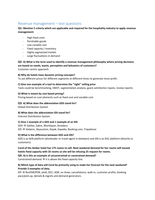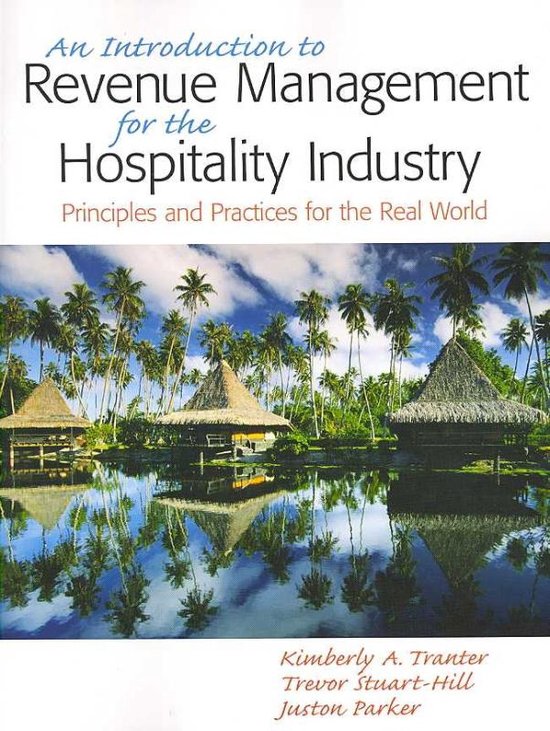Revenue management – test questions
Q1: Mention 5 criteria which are applicable and required for the hospitality industry to apply revenue
management:
- High fixed costs
- Perishable goods
- Low variable cost
- Fixed capacity / inventory
- Highly segmented market
- Large fluctuations in demand
Q2: A) What is the term used to identify a revenue management philosophy where pricing decisions
are based on needs, wants, perception and behaviors of customers?
Customer centric approach
B) Why do hotels have dynamic pricing concepts?
To ask different prices for different segments at different times to generate more profit.
C) Give one example of a tool to determine the ‘’right’’ selling price
Tools could be benchmarking, SWOT, segmentation analysis, guest satisfaction repots, review reports.
D) What is meant by cost based pricing?
Pricing based on cost elements such as fixed cost and variable cost.
Q3: A) What does the abbreviation GDS stand for?
Global Distribution System
B) What does the abbreviation IDS stand for?
Internet Distribution System
C) Give 1 example of a GDS and 1 example of an IDS
GDS Galileo, Sabre, Worldspan, Amadeus
IDS Hotwire, Skyauction, Kayak, Expedia, Booking.com, Tripadvisor
D) What is the difference between GDS and IDS?
GDS is an B2B platform (wholesaler or travel agent in between) and IDS is an B2C platform (directly to
customers).
Carol of the Amber hotel has 175 rooms to sell. Next weekend demand for her rooms will exceed
hotels fixed capacity with 25 rooms so she will be refusing 25 request for rooms.
Q4: A) Is this an example of unconstrained or constrained demand?
Constrained demand it is above the fixed capacity line.
B) Which type of data will Carol be primarily using to make her forecast for the next weekend?
Provide 3 examples of data.
KPI RevPAR/POR, yield, OCC, ADR, no show, cancellations, walk-in, customer profits, booking
pace/pick-up, denials & regrets and demand generators.





